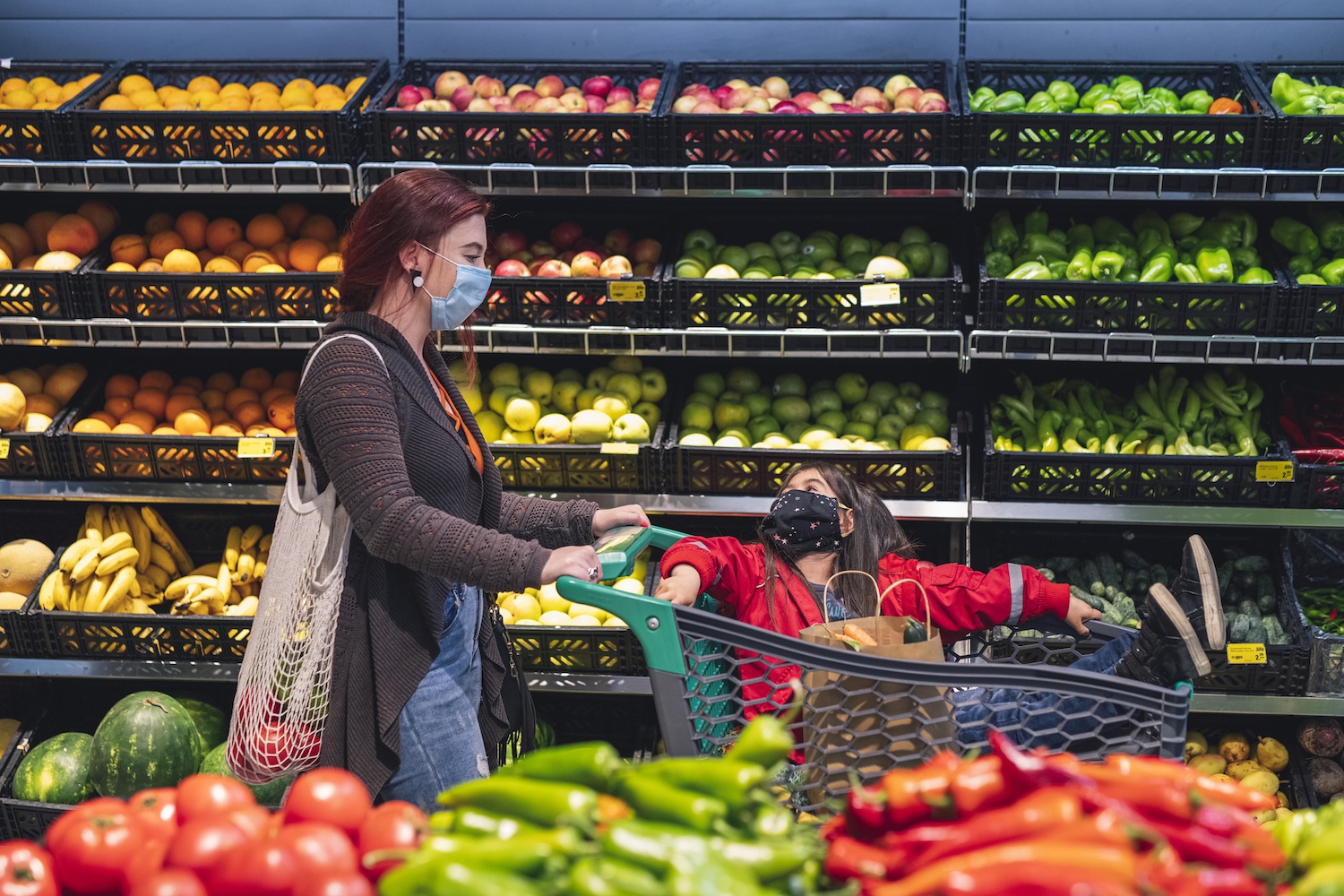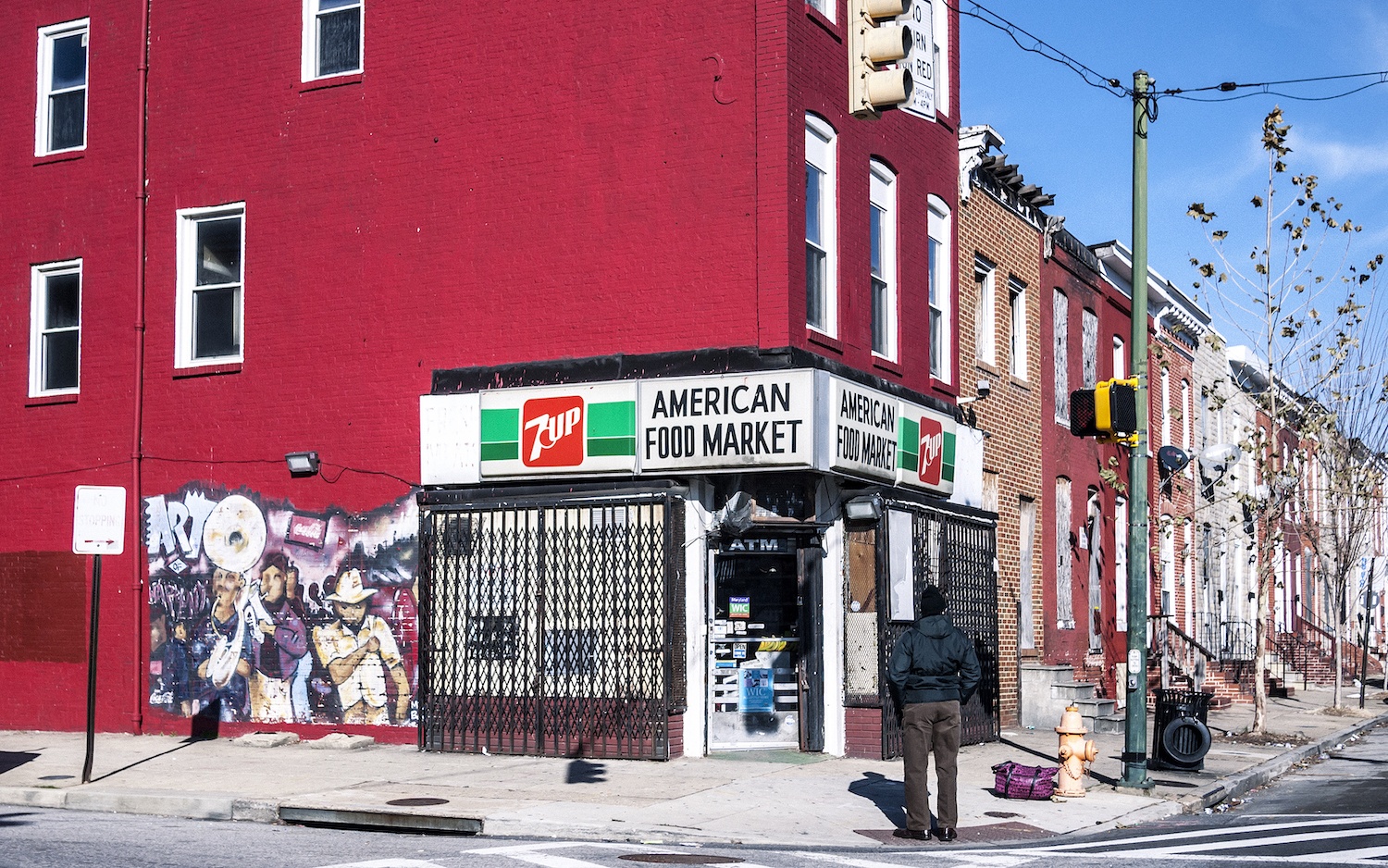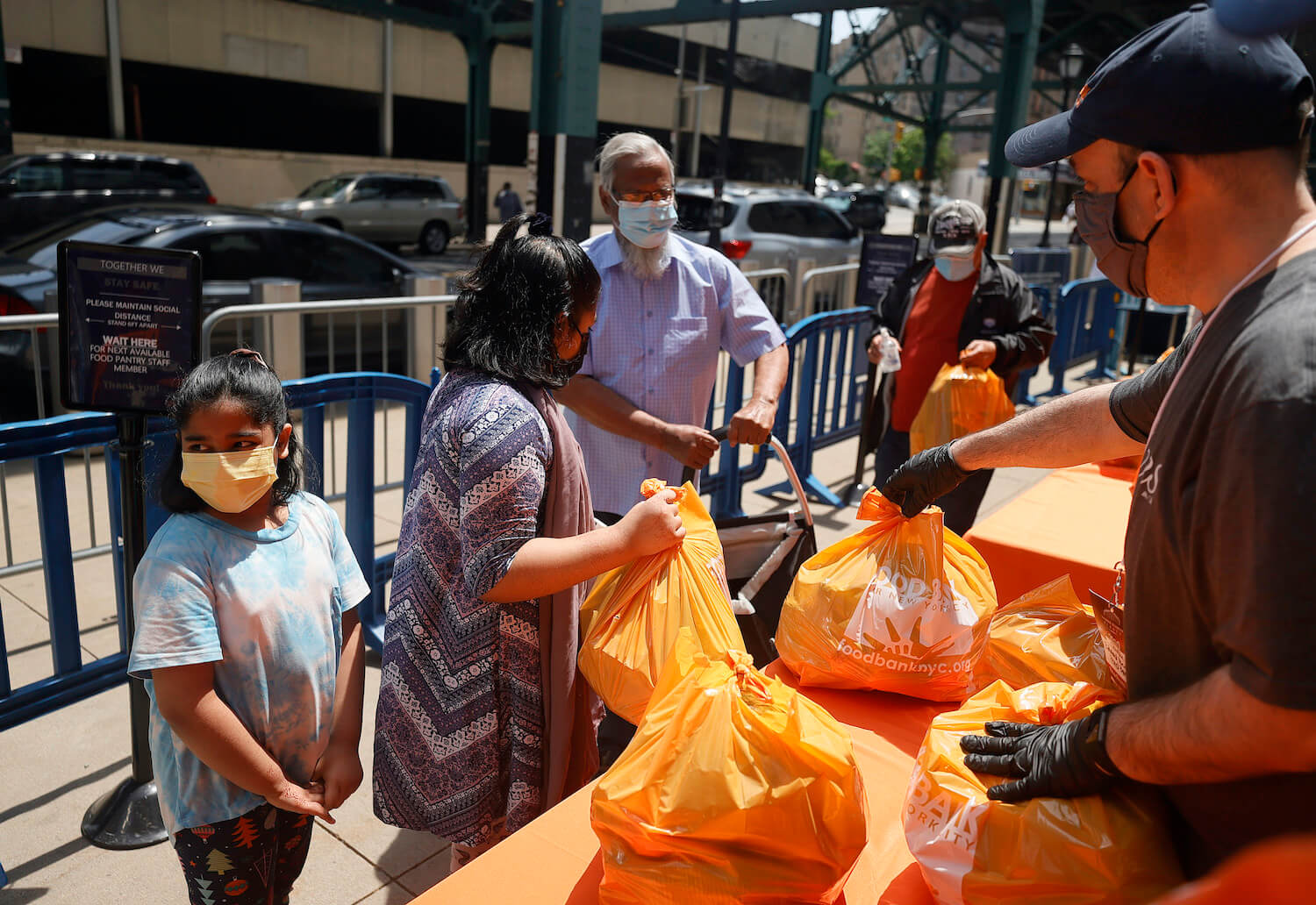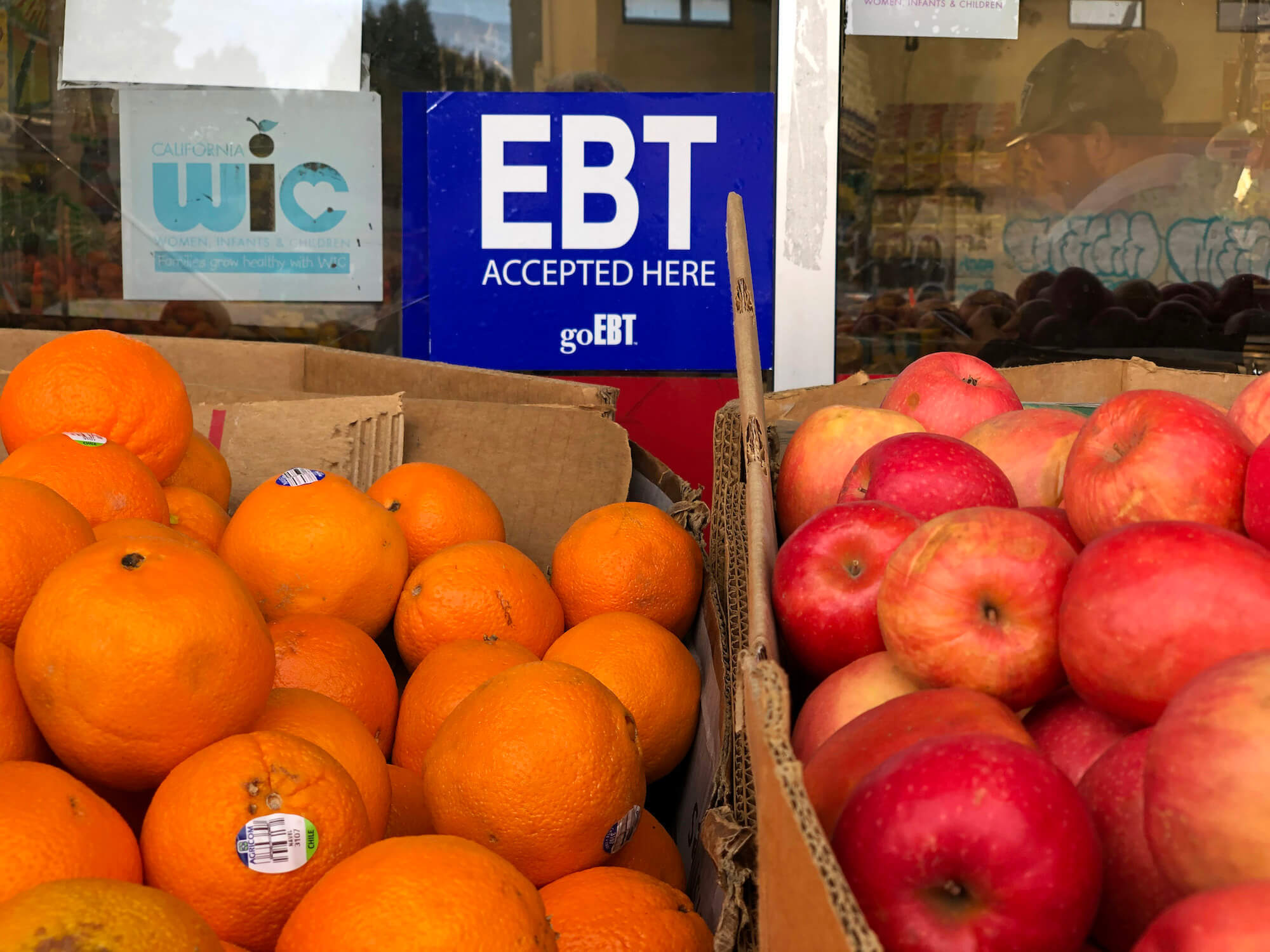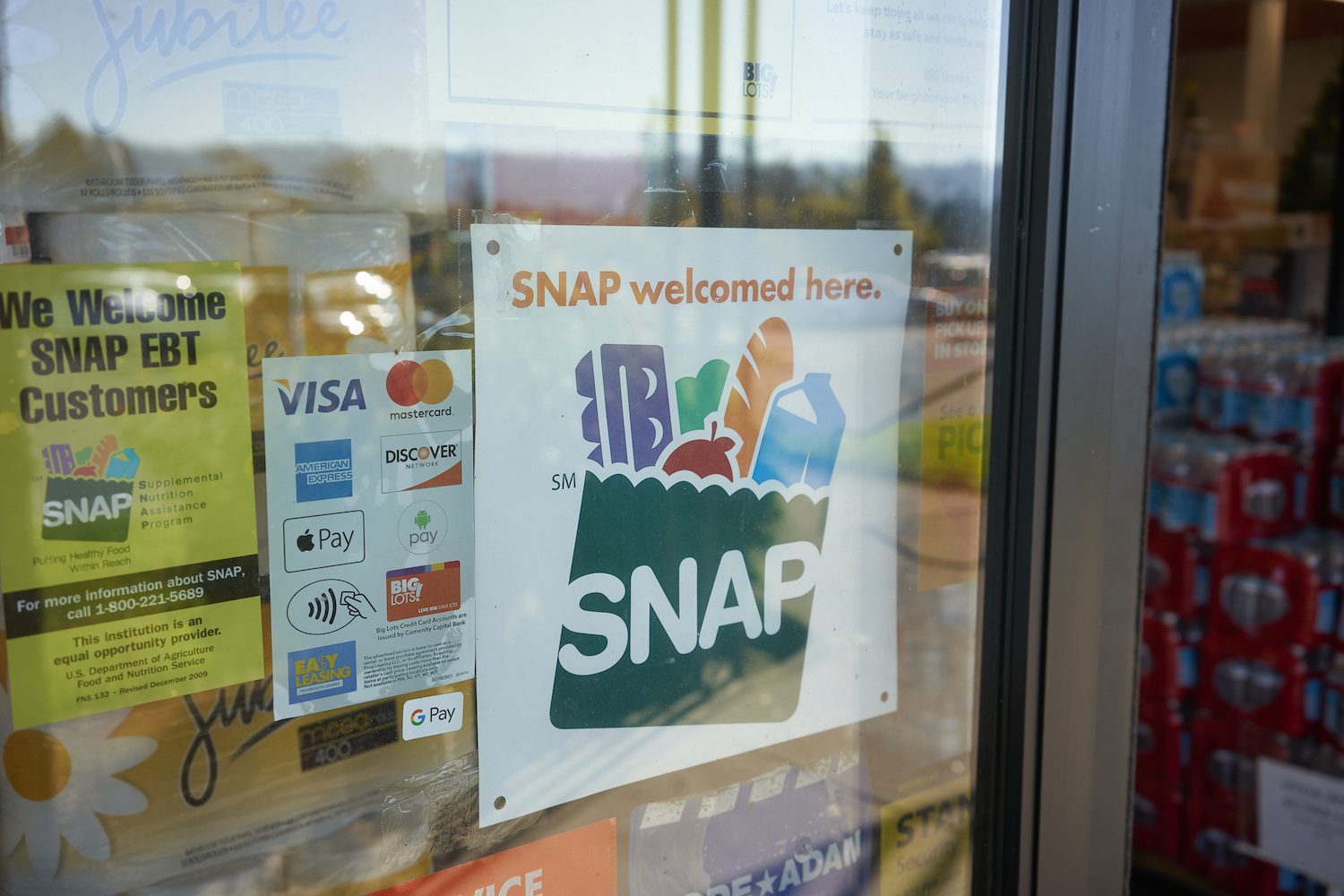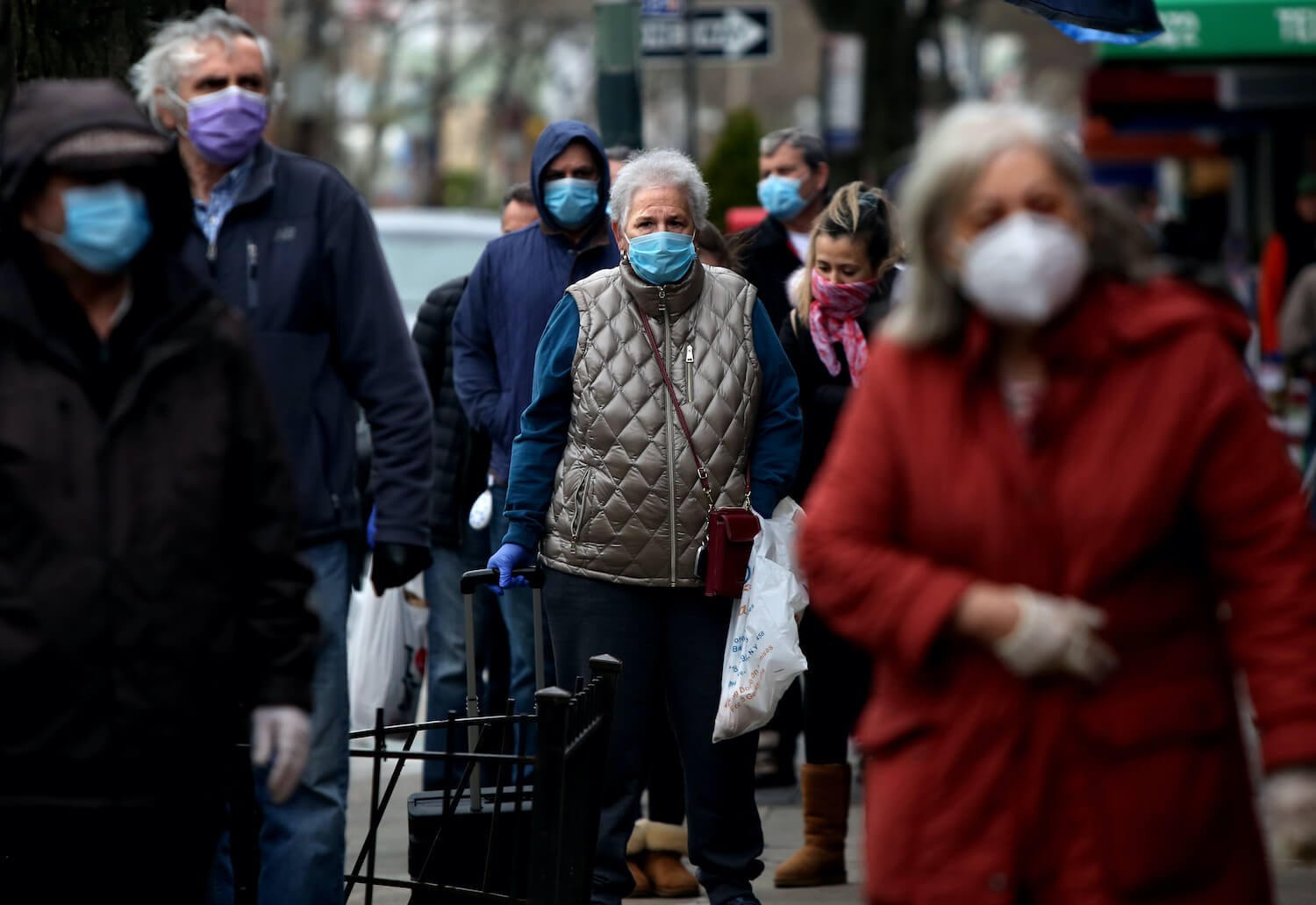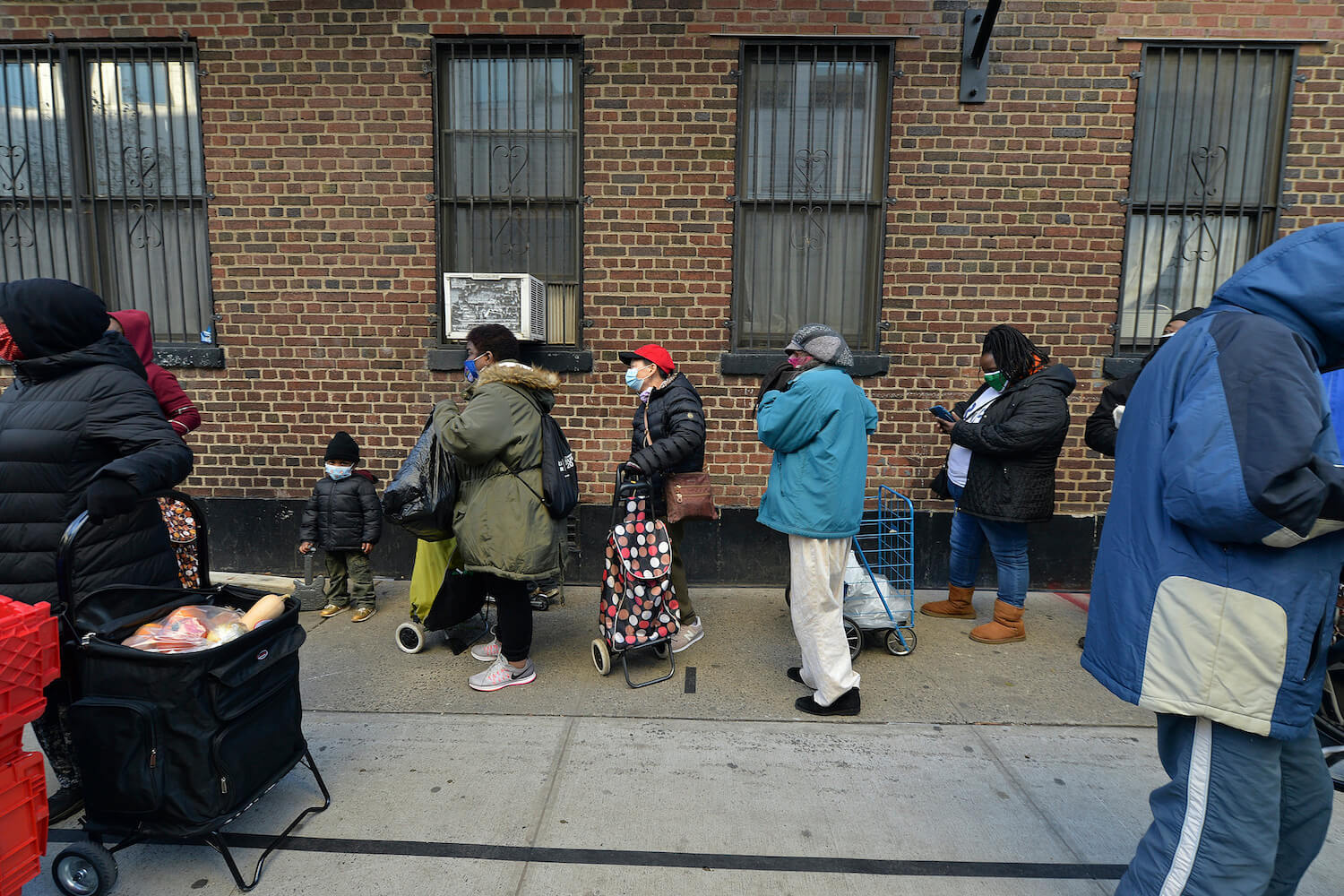
Getty Images
Here’s how getting a raise can trap SNAP users in a cycle of poverty.
If you are a single, working parent in the United States, struggling to stretch your too-small income over your looming mountain of monthly expenses—rent, childcare, medical bills, transportation, utilities, and of course, food—it’s likely that you qualify for some financial assistance from the government. Depending on where you sit relative to the federal poverty level (FPL), how many people live in your household, and how much you earn, you might be eligible for housing and childcare subsidies, tax credits and other income supports, Medicaid, cash assistance, SNAP and WIC benefits to purchase food, and free and reduced-price school lunch for your kids. That is, if you can figure out how to navigate the arduous, opaque, and usually unconnected application requirements that each of these programs requires.
Laura Sylvester, public policy manager at the Food Bank of Western Massachusetts, calls this juggle a part-time job in and of itself. The process causes “so much angst,” she said, and people have to “struggle so much, with not a lot of help” from the relevant agencies themselves. It’s also a set-up, she said, for families who get trapped in a cycle of poverty from which it can be next to impossible to extricate themselves.
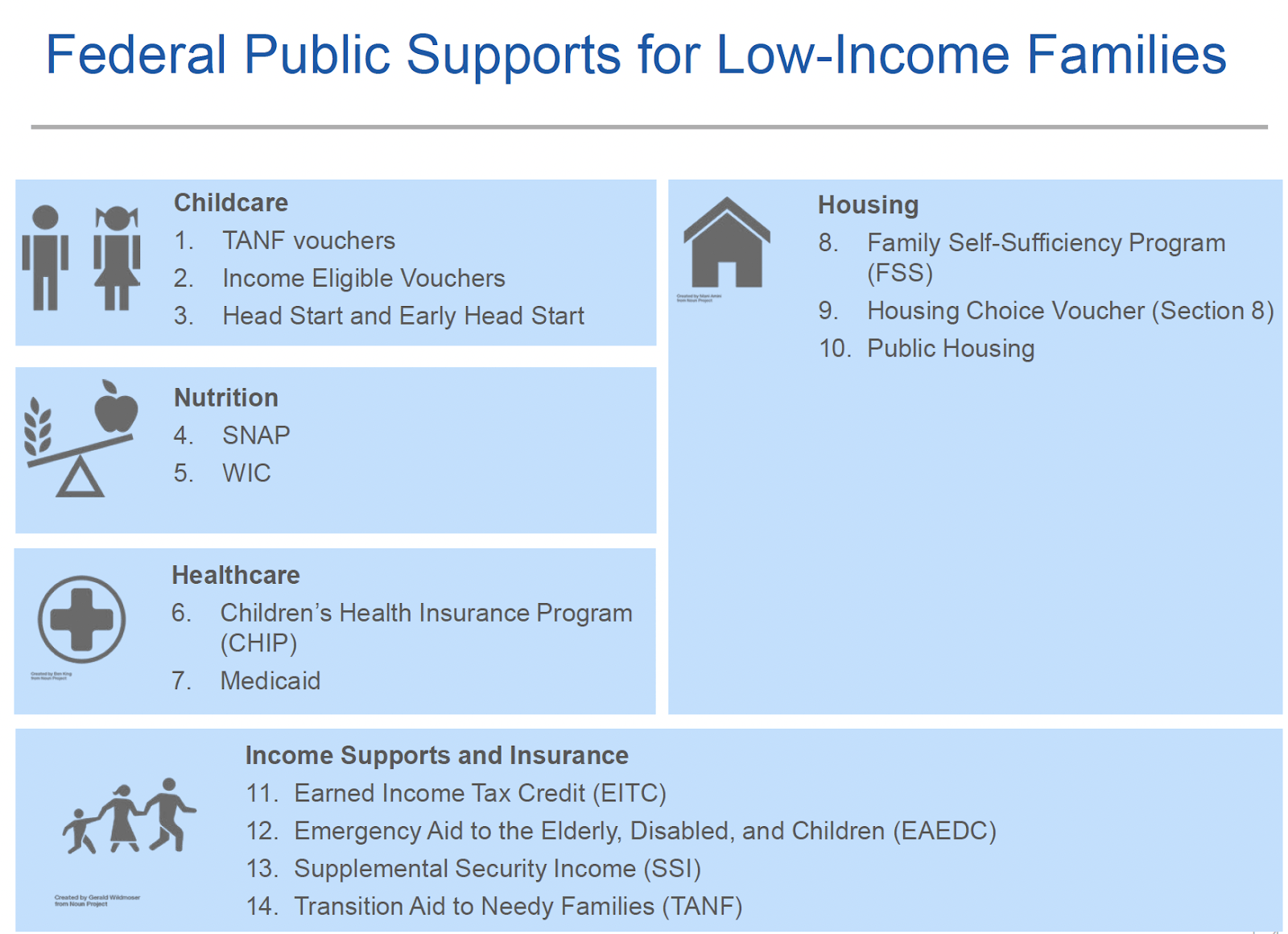
Center for Social Policy
We’re talking about a common and perilous financial reality that’s little discussed outside wonkish circles, known as the cliff effect—or, perhaps more familiar to some, the benefits cliff. The term describes a positive change in someone’s personal finances—a raise or rise in income, of as little as 25 cents an hour, in some cases—that then disqualifies them from continuing to receive public benefits, whether or not they’re financially stable enough to absorb the loss of those benefits. No one knows for certain how many of the 59 million Americans receiving public benefits in any given month are at risk; in Ohio, research has shown that 20 percent of businesses have encountered the benefits cliff as it relates to their workers.
Cliffs aren’t a new phenomenon; they’ve been an uncomfortable by-product of income-based public assistance programs for decades. They don’t just affect single parents; any working person who gets public assistance is vulnerable to the benefits cliff. But single-parent households receiving certain kinds of aid get whalloped the hardest, as a study from the Center for Social Policy at the University of Massachusetts Boston shows. These households tend to have the highest resource need, mostly around paying for childcare, and the most to lose if those resources disappear.
“When someone makes even one dollar over some arbitrary program limit, their food assistance completely vanishes. In some cases, it even costs people more to have full-time work because their income causes them to lose all the benefits they rely on to put food on the table.”
With so much recent focus on food and related insecurities during the pandemic, the benefits cliff has become of topic of interest to legislators seeking to better understand how to pull America’s working poor out of food- and needs insecurity more broadly, and place them on less tenuous financial ground. What will actually work and who else, beyond workers, needs to be a part of that equation? There are partial solutions already at play in various states. The trick is taking them national, and including employers in the conversation. To do that requires a much better understanding of how they work and who is actually vulnerable.
Introducing a roundtable in late October on the benefits cliff as part of his effort to develop a plan to end hunger in America, Democratic Congressman Jim McGovern of Massachusetts, co-chair of the House Hunger Caucus, along with Indiana Republican Jackie Walorski, suggested it would make sense for SNAP benefits, for example, to gradually decrease as someone began to earn more, thereby ensuring a family’s ability to access enough to eat.
But “that’s not the way it works,” McGovern said. “Instead, when someone makes even one dollar over some arbitrary program limit, their food assistance completely vanishes. In some cases, it even costs people more to have full-time work because their income causes them to lose all the benefits they rely on to put food on the table.”
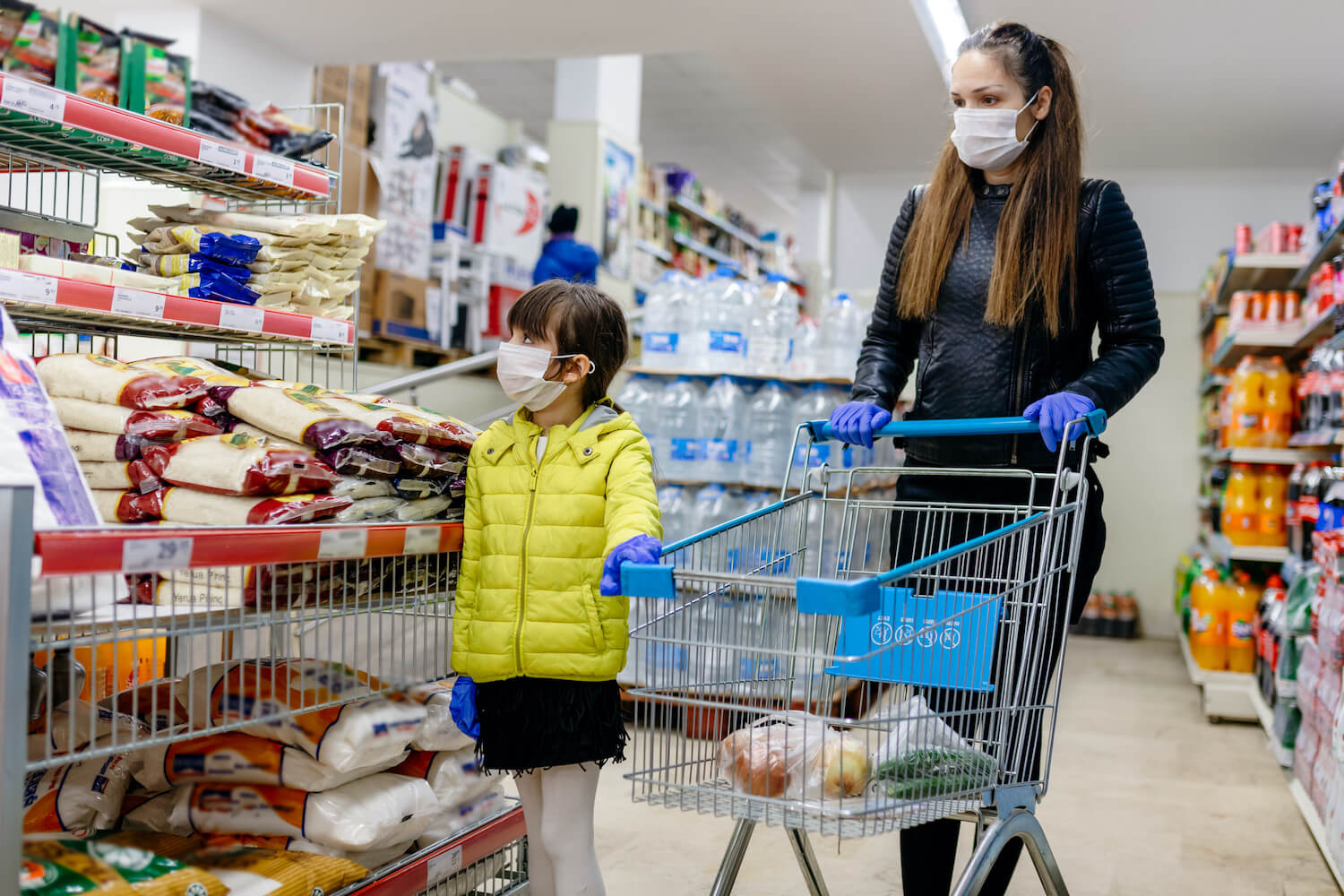
The benefits cliff doesn’t just affect single parents. Any working person who gets public assistance is vulnerable to the benefits cliff.
iStock/Phynart Studio
For a family receiving multiple supports, even non-food related programs can help them afford groceries, since housing or childcare benefits free up cash. But the effect is so highly individualized—not only to a particular family but also varying by state, county, city, and with each benefits program factoring in its own limitations and income thresholds—that even experts working within the system “can’t fully see how benefits and income work together,” according to Leap Fund, a fin-tech nonprofit based in New York and focused on benefits cliffs. “From case workers to government agencies, to think tanks and policy makers, each expert has a deep, but siloed, view of the problem.” Said Karen Schoellkopf, Leap Fund’s CEO, who gave testimony at the roundtable. “We’re not even collecting all the data necessary to understand the problem.”
Here are the basics when it comes to benefits: In order to qualify for SNAP, you must be a U.S. citizen or lawfully present non-citizen with an income at or below 130 percent of the federal poverty level. That level varies by how many people are living in your household; for 2022, in the 48 contiguous states and Washington, D.C., it’s $28,550 for a family of three—although SNAP considers your gross monthly income, which is currently set at $2,379 for a family of three. Applicants must have less than $2,500 in assets in the bank and elsewhere and meet employment requirements that vary by state.
Laura Sylvester at the Food Bank of Massachusetts presents a common cliff scenario: “Let’s say that somebody is working as a daycare provider and earning Massachusetts’ minimum wage of $13.50 an hour. They get some SNAP benefits, and they are in Section 8 housing, which is a federal housing subsidy you often have to wait for for 20 or more years before you’re approved; the waiting list is so long because of the incredible lack of affordable housing. Say that daycare provider gets offered a promotion to become a supervisor and is given a $1.50-an-hour raise. That tiny little income bump puts them over the eligibility for SNAP so they’re going to lose all their [SNAP] benefits, and it maybe puts them over the edge for housing, which nobody wants to lose because what happens if you take the raise and get laid off three months later? You’re out of luck and back on the waitlist… [and you can be] so much worse off than before.”
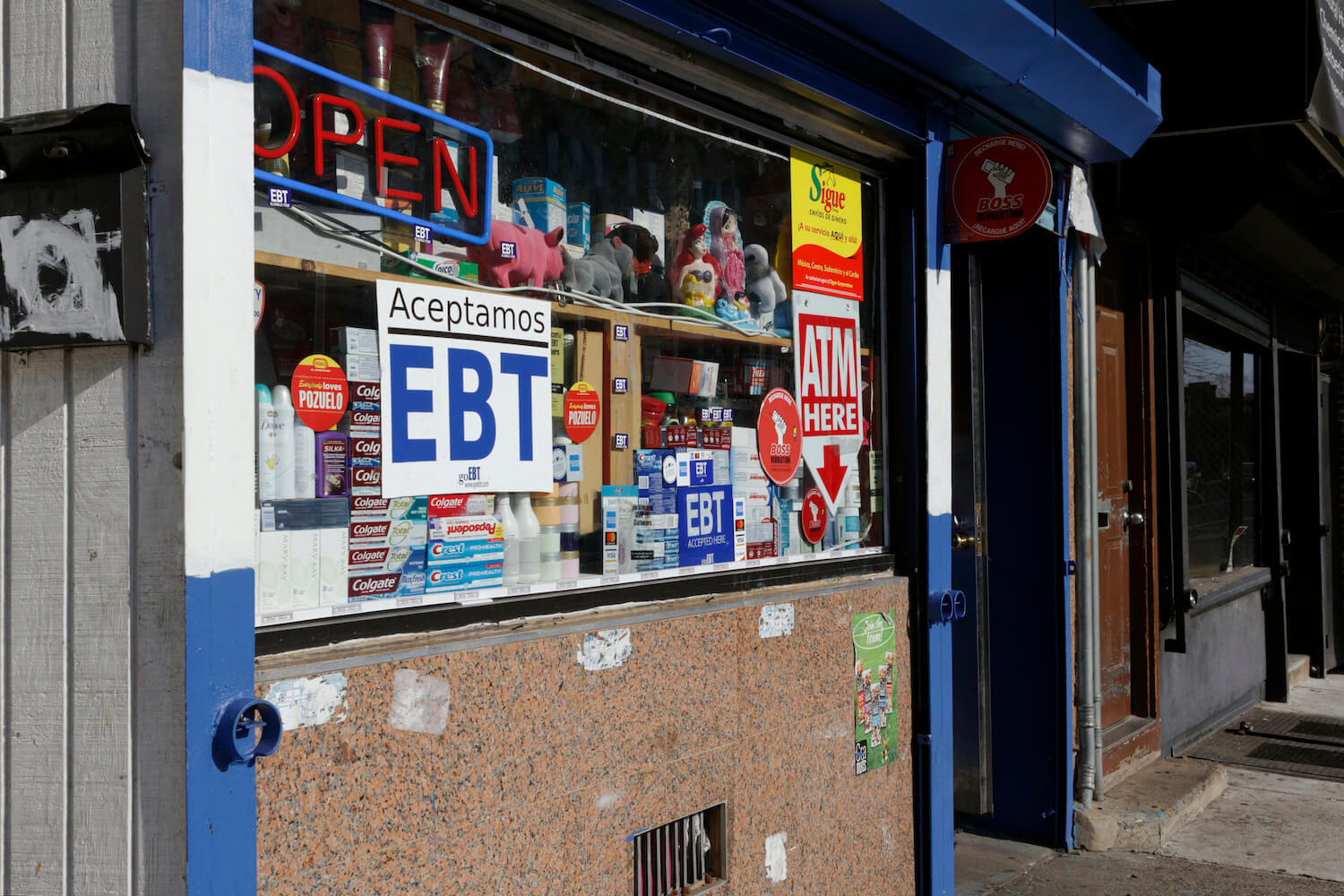
In order to qualify for SNAP benefits, you must be a U.S. citizen or lawfully present non-citizen with an income at or below 130 percent of the federal poverty level, which varies according to household size.
iStock/JanaShea
Schoellkopf said there’s also a second, much wider, category of people affected by the benefits cliff: those who “make financially conservative decisions out of fear of hitting the them: turning down raises, promotions, hours, leaving jobs, so as not to fall into financial catastrophe.”
Either situation can keep a person in poverty and make them more vulnerable to food and nutrition insecurity over the long term. “Lower-income populations on SNAP tend to spend most of their income on housing, utilities—the basics—and their food budget tends to be much more dispensable,” said Amy Yaroch, executive director of the Gretchen Swanson Center for Nutrition in Omaha, Nebraska. “When they lose government benefits due to an increase in wages, they have more limited access to healthful foods. They’re making sure their kids are fed, but it’s cheap calories, not nutritious foods” that kids require to learn and thrive.
Single-parent households aren’t the only ones who are vulnerable. Two-parent households can also experience the cliff effect, as can individuals. A single man working a consistent but seasonal job for most of the year, for instance, may lose his SNAP benefits if he’s not able to find a second job to help him meet his 20-hour-a-week requirement for benefits, according to Michael Wilson, director of Maryland Hunger Solutions—although Sylvester says the main cliff impact in this scenario tends to be around housing. Even efforts to raise the minimum wage in certain states have pushed some workers over the cliff. According to a 2017 article in New Mexico in Depth, as the city of Las Cruces prepared for a minimum-wage hike from $7.50 to $9.20, and then again to $10.10, there were very real concerns about how many people might hit the cliff effect, or fail to qualify for benefits entirely—even if the raise wasn’t enough to cover their food needs. Still, said Schoellkopf, “We should absolutely raise the minimum wage. This is not either/or; policy needs to evolve to meet the moment and the needs of people.”
“When they lose government benefits due to an increase in wages, they have more limited access to healthful foods. They’re making sure their kids are fed, but it’s cheap calories, not nutritious foods.”
Thorny though it is to find comprehensive solutions to the cliff effect, certain mitigating and hopefully sustainable possibilities are beginning to emerge. On the federal level, the HOPE Act includes two pilot programs aimed at helping eligible individuals learn to budget, build savings, and improve their financial security over the long term. The act would also improve technology to the point where multiple benefits could be applied for at the same time—a measure that might allow applicants and anyone assisting them to see where potential cliffs lie. As it was originally proposed in 2016, the HOPE framework also required use of a calculator system to help families understand the financial impacts of one program on another. According to Schoellkopf, “That is incredibly powerful, since not knowing is what’s creating a lot of problems to begin with. That can be part of the data collection that helps us better understand how to tweak policies.”
Another policy effort, the ASSET Act, would eliminate asset tests or resource limits on a cash-assistance program called Temporary Assistance for Needy Families (TANF), as well as on SNAP. That’s important because currently, said Sylvester, if you have a house, a savings account, a car worth more than $5,000, you’re ineligible for most benefits. “If you lose your job but still have your car, you’d have to [also] lose your house to qualify,” she said. “So you have to be dead broke” to get these benefits.
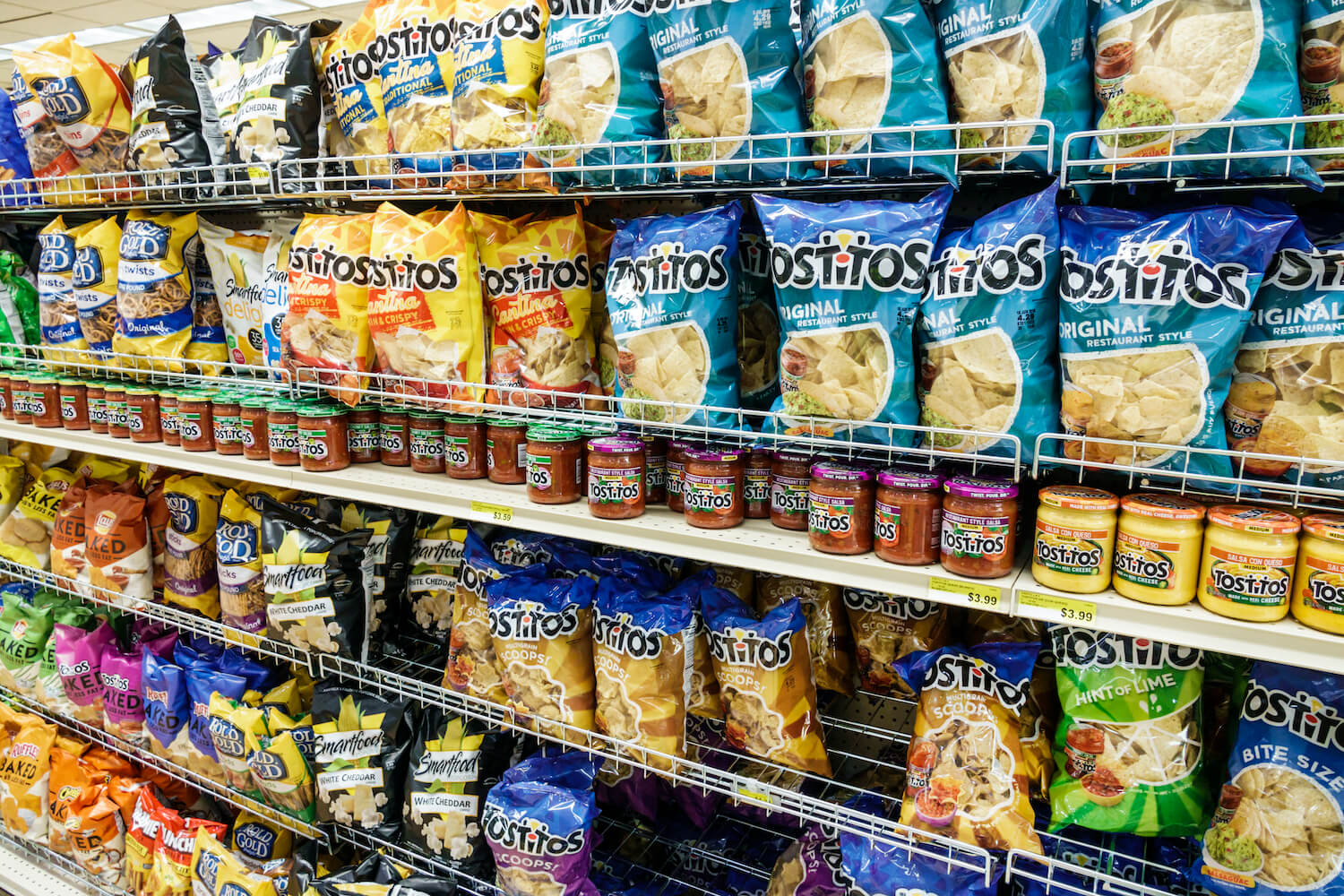
A loss in benefits due to increased wages can also limit access to healthier foods as cheaper snacks become an option.
Jeffrey Greenberg/Education Images/Universal Images Group via Getty Images
A number of individual states have enacted some initiatives to confront the financial conditions that make people vulnerable to benefits cliffs. Massachusetts has upped a family’s SNAP eligibility from 130 to 200 percent of the FPL, which allows for assistance even at a higher income level. Oregon doubled the income threshold for families receiving TANF and enacted a three-month phase-out of the benefit, gradually ratcheting it down to 75 percent, then to 50 percent, before getting rid of it altogether as income rises—the sort of gradual phase-out Yaroch believes allows people to “accumulate savings before removing benefits.” Colorado has a subsidized childcare system that allows families to pay on a sliding scale that’s proportional to any income increases they receive.
Sylvester and partners of the food bank have been pushing for Massachusetts state legislation related to the state’s Earned Income Tax Credit (EITC). This would ensure that families facing a benefits cliff would have some or all of that gap in resources filled by extra EITC monies—either as a lump-sum refund at tax time, or a monthly or quarterly payment “so people can budget,” Sylvester said. If passed, Massachusetts would be the first state to use the EITC in this way, “and we’re excited because it’s actually a simplified fix as opposed to tweaking each benefit separately and trying to get them to work together, and it’s almost like guaranteed basic income because it’s giving people money so they can start to move forward in their career path.”
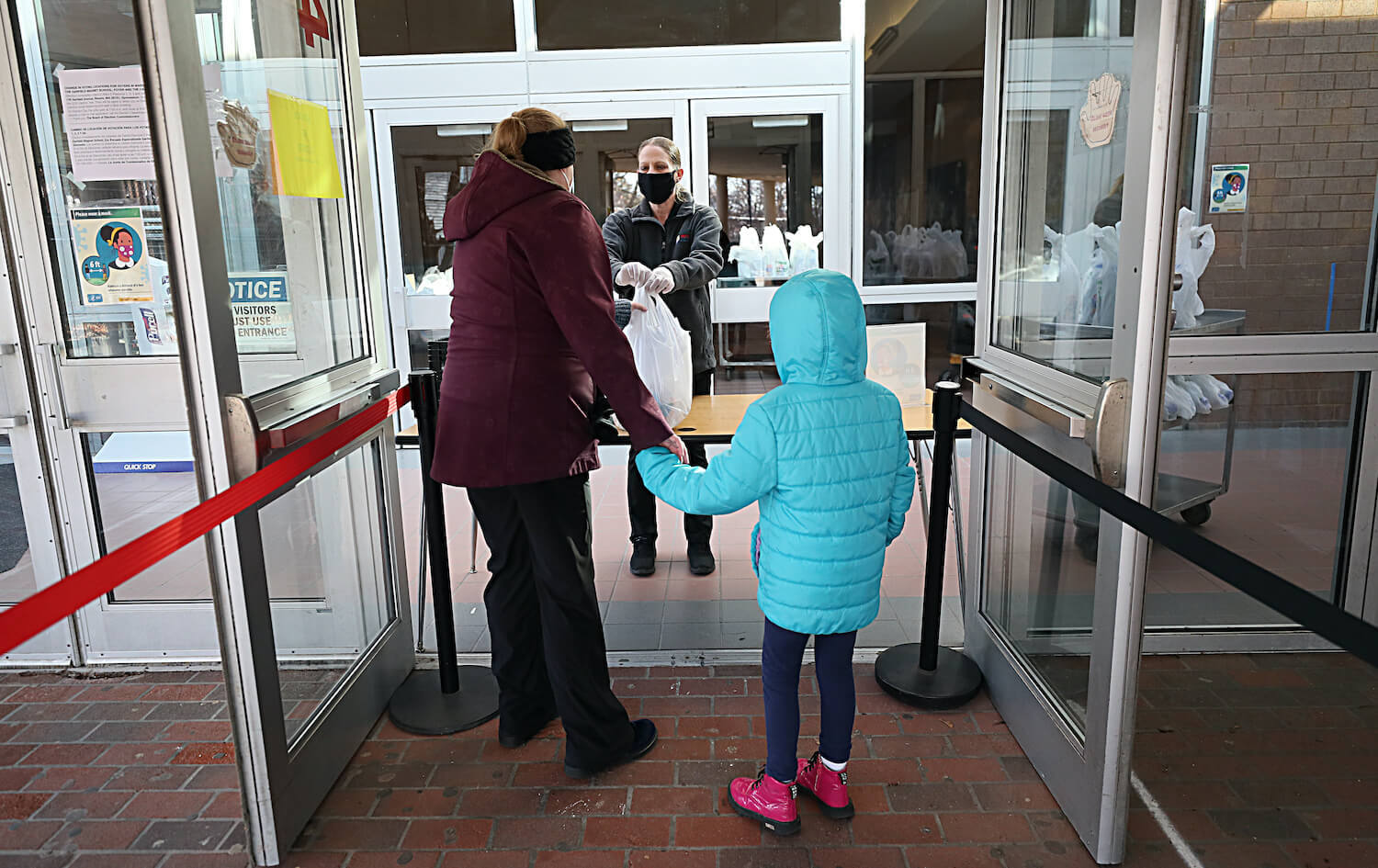
Feeding kids through universal school meals could be an important fix to the benefits cliff, with federal legislation having the most weight.
Suzanne Kreiter/The Boston Globe via Getty Images
Wilson calls the benefits cliff a “Human-made solution that is human-solvable. We need to feed kids in school without worrying whether Johnny’s mom makes $25,000 a year or $23,000 year.” He sees universal school meals, which Maryland is currently considering, as an important partial fix to the benefits cliff, although federal legislation, rather than piecemeal state efforts, would have the most heft. And he points out that increasing the maximum monthly SNAP pay-outs is good for the broader economy as well as for people with limited resources, giving them more to spend in grocery stores, bodegas, and at farmers’ markets.
There is bipartisan support for eliminating benefits cliffs from our array of assistance programs, though not to the same end and the reasons differ. Yaroch says Republicans see these cliffs as disincentivizing work, while Democrats see them as barriers to advancement. Ultimately, though, “We’re so gung-ho in the U.S. about people pulling themselves up by bootstraps,” said Sylvester. “But people don’t realize the system is stacked against them.”

